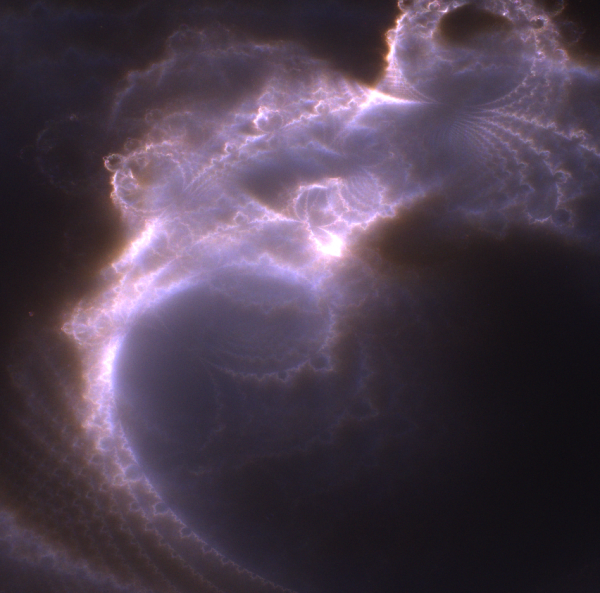
This rendering was produced by evaluating the famous mandelbrot fractal, but instead of just counting the number of iterations for each pixel I wanted to draw the positions of the full sequence/trajectory (until bailout) of points from each starting point. Since the iterative function is quite chaotic the points within the sequence scatter all over the image in a very unpredictable fashion.
The challenge of rendering this image lies in the fact that when displaying a tiny region of the overall space only a tiny amount of points will fall in the view and billions of them will fall somewhere else where they don’t contribute to the final rendering at all. In order to not waste billions of iterations to get just a few rendered pixels I used the Metropolis/Hastings algorithm. This technique will “mutate” past trajectories (or paths) which did successfully fall in the view in order to produce (to a high chance) more points which will also fall in that view. This algorithm works well, because similar starting points will produce similar trajectories (but trajectories will diverge in some exponential fashion). This technique is also quite useful when computing global illumination of 3D scenes as this is sampling-wise quite a similar problem.
« 2D N-Body simulation (3 million particles) – structure of the universe Commodore Amiga500 emulation »

Hi! Do you use Twitter? I’d like to follow you if that would be ok. I’m undoubtedly enjoying your blog and look forward to new updates.
thank you 🙂
I dont use twitter, but there is an RSS feed you can use for updates.
cheers!